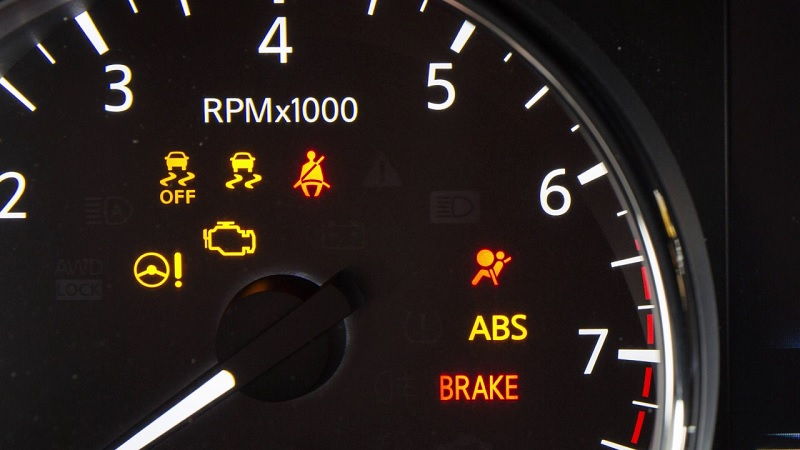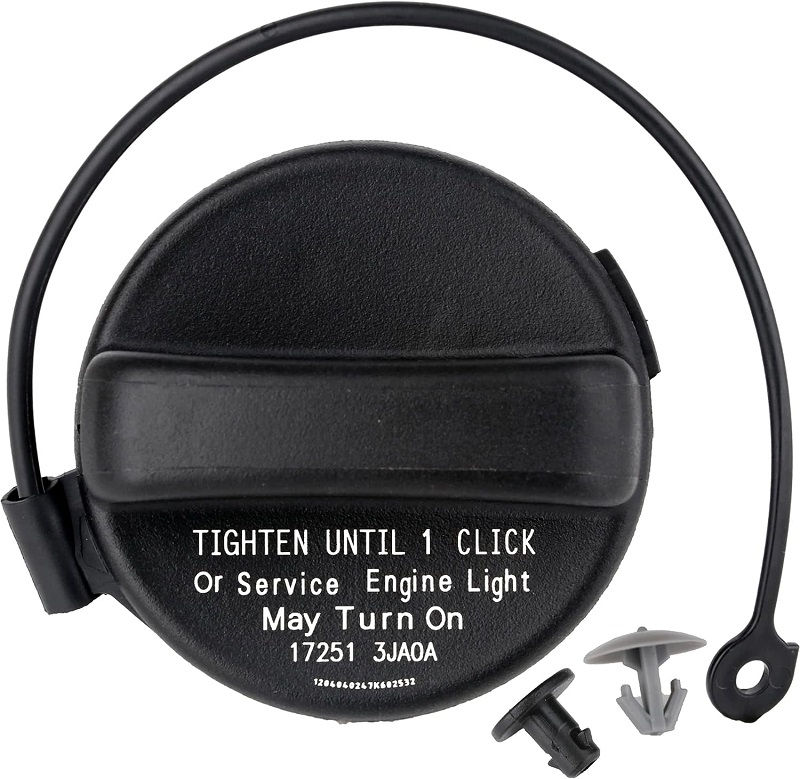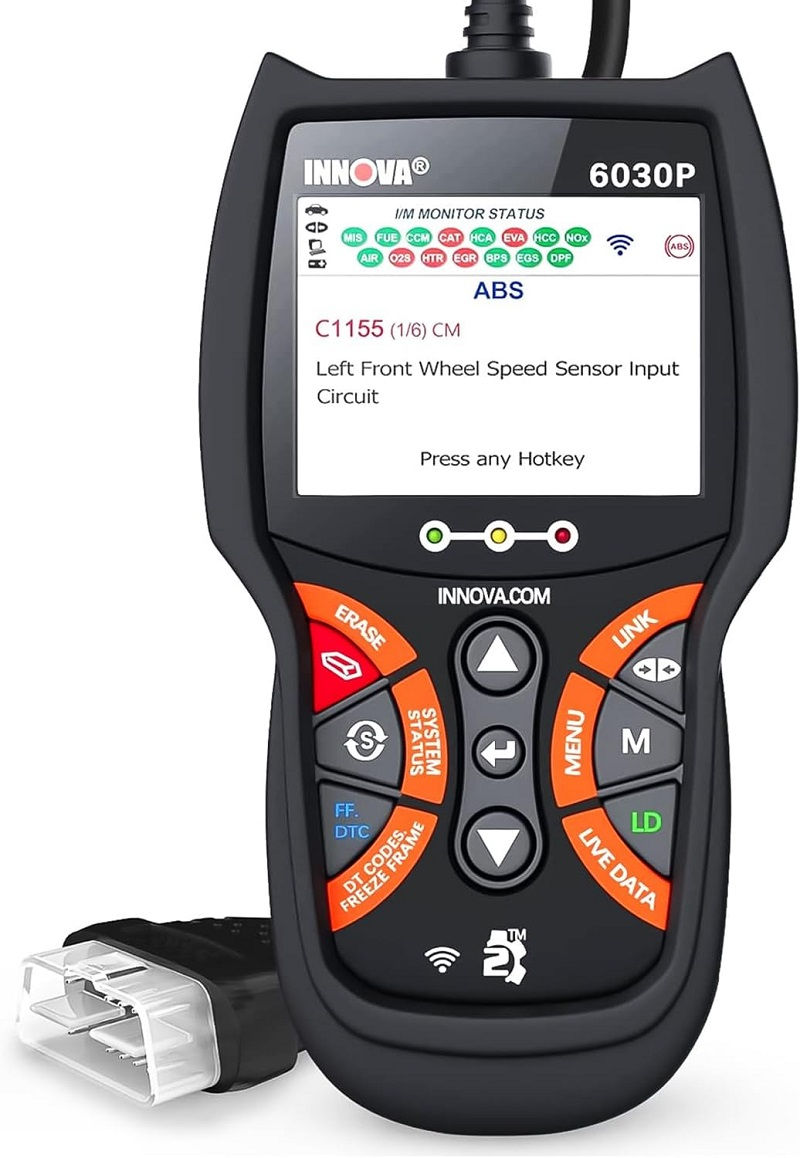This post contains affiliate links. This means I will make a commission at no extra cost to you should you click through and make a purchase [ “As an Amazon Associate, I earn from qualifying purchases.” ]. Read the full disclosure here.
Malfunction Indicator Light Nissan GuideMechanic.Com As a Nissan owner, you may have experienced the dreaded moment when the malfunction indicator light (MIL) suddenly illuminates on your dashboard.
This small, yet significant, indicator can cause panic and confusion for many drivers. However, understanding what the MIL represents and how to respond to it can help you avoid unnecessary stress and potentially costly repairs.
In this comprehensive guide, we will delve into the details of the malfunction indicator light in Nissan vehicles. We will explore its purpose, common reasons for its activation, and steps you can take to address the issue effectively.
What is the Malfunction Indicator Light?

The Malfunction Indicator Light, often referred to as the “check engine light,” is an essential component of your Nissan’s onboard diagnostics system.
See Also: Service Engine Soon Nissan
It is designed to alert you to potential issues with your vehicle’s engine or emissions system. When the MIL illuminates, it indicates that the engine control module (ECM) has detected a fault or malfunction within the system.
This fault could range from a minor issue, such as a loose gas cap, to a more serious problem that requires immediate attention.
Understanding the Different States of the MIL
The Malfunction Indicator Light can appear in various states, including solid, flashing, or intermittent. Each state carries a different level of urgency and severity.
A solid light typically indicates a less severe issue that may not require immediate attention but should still be addressed soon.
A flashing light, on the other hand, signifies a more critical problem that requires immediate attention to prevent further damage to the engine or emissions system.
An intermittent light, which turns on and off, may indicate an intermittent problem that needs to be diagnosed and resolved to avoid potential complications.
Importance of Not Ignoring the MIL
While it may be tempting to ignore the Malfunction Indicator Light, doing so can have serious consequences. Ignoring the MIL can lead to further damage to your vehicle’s engine or emissions system, potentially resulting in expensive repairs.
Additionally, a lit MIL means that your vehicle may not be operating at its optimal level, which can lead to decreased fuel efficiency and performance.
Therefore, it is crucial to address the issue causing the MIL activation as soon as possible to ensure the longevity and reliability of your Nissan.
Common Reasons for Malfunction Indicator Light Activation
See Also: Nissan Altima Catalytic Converter
There are numerous factors that can trigger the activation of the Malfunction Indicator Light in your Nissan.
While the specific cause can vary depending on the make and model of your vehicle, some common reasons for MIL activation include:
1. Loose or Faulty Gas Cap

A loose or faulty gas cap is one of the most common reasons for the Malfunction Indicator Light to illuminate. A loose gas cap can cause a vapor leak in the fuel system, which triggers the MIL.
Fortunately, this is a relatively easy and inexpensive issue to fix. Simply tightening or replacing the gas cap should resolve the problem and turn off the MIL.
2. Oxygen Sensor Malfunction
The oxygen sensor plays a vital role in monitoring the amount of oxygen in the exhaust gases and adjusting the fuel mixture accordingly.
If the oxygen sensor malfunctions, it can lead to an incorrect fuel mixture, decreased fuel efficiency, and increased emissions.
This issue can trigger the MIL, and it is recommended to have a professional diagnose and replace the faulty oxygen sensor to resolve the problem.
3. Faulty Mass Airflow Sensor
The mass airflow (MAF) sensor measures the amount of air entering the engine and helps determine the appropriate fuel-to-air ratio.
A faulty MAF sensor can disrupt this ratio, leading to engine performance issues and increased emissions.
In many cases, a faulty MAF sensor will trigger the MIL, and it is advisable to have it inspected and replaced if necessary.
4. Catalytic Converter Problems
The catalytic converter is responsible for reducing harmful emissions by converting toxic gases into less harmful substances. If the catalytic converter fails or becomes damaged, it can trigger the Malfunction Indicator Light.
See Also: 2010 Nissan Murano Problems
Common signs of catalytic converter problems include decreased engine performance, increased fuel consumption, and a sulfur-like odor. Resolving catalytic converter issues often involves professional diagnosis and repair.
5. Ignition System Issues
Problems within the ignition system, such as faulty spark plugs or ignition coils, can lead to engine misfires and trigger the Malfunction Indicator Light.
Ignoring ignition system issues can cause damage to the engine and decrease fuel efficiency. It is crucial to address these issues promptly by replacing faulty components and ensuring the ignition system is in proper working order.
6. Emissions System Malfunctions
The emissions system in your Nissan plays a crucial role in reducing harmful pollutants released into the environment. If any component within the emissions system malfunctions, it can trigger the Malfunction Indicator Light.
This can include issues with the exhaust gas recirculation (EGR) valve, evaporative emissions control system, or other emissions-related components. Professional diagnosis and repair are often necessary to resolve emissions system malfunctions.
Diagnostic Tools and Techniques
When faced with a lit Malfunction Indicator Light, it is crucial to have access to the right diagnostic tools and techniques.
While it is possible to retrieve basic diagnostic trouble codes (DTCs) using a code reader or scanner, understanding the meaning and implications of these codes requires more in-depth knowledge.
Using Onboard Diagnostics (OBD) Scanners

An onboard diagnostics (OBD) scanner is a valuable tool for retrieving diagnostic trouble codes from your Nissan’s ECM. These scanners can provide you with specific codes that indicate the nature of the fault or malfunction.
However, it is important to note that the codes themselves do not always pinpoint the exact cause of the issue.
They serve as a starting point for further diagnosis and should be interpreted in conjunction with other symptoms and diagnostic information.
Professional Diagnostic Services
In cases where the Malfunction Indicator Light persists or the issue is more complex, seeking professional diagnostic services is highly recommended.
Certified Nissan technicians have access to advanced diagnostic equipment, specialized knowledge, and manufacturer-specific information that can help identify the root cause of the MIL activation more accurately.
These professionals can perform in-depth inspections, conduct live data analysis, and perform necessary tests to diagnose and resolve the issue effectively.
Understanding Diagnostic Trouble Codes (DTCs)
Diagnostic trouble codes (DTCs) are alphanumeric codes that indicate specific faults or malfunctions within your vehicle’s systems.
When the Malfunction Indicator Light is activated, retrieving and understanding these codes can provide valuable insights into the underlying issue. Each code consists of a letter followed by four digits. The letter indicates the general category of the fault, while the digits provide more specific information.
See Also: 2006 Nissan Pathfinder Catalytic Converter
However, it is essential to remember that DTCs alone do not provide a complete diagnosis and should be used as a starting point for further investigation.
Addressing Common Malfunction Indicator Light Issues
While each Malfunction Indicator Light activation may have a unique cause, there are several common issues that Nissan owners frequently encounter. Let’s explore these issues and offer practical steps and solutions to address them effectively:
Tightening or Replacing the Gas Cap
If your Malfunction Indicator Light is illuminated due to a loose or faulty gas cap, the solution is relatively straightforward.
Start by ensuring that the gas cap is tightened securely. If the cap is damaged or worn, it may need to be replaced.
After addressing the gas cap issue, the Malfunction Indicator Light should turn off on its own after a few driving cycles.
Replacing Faulty Oxygen Sensors
Faulty oxygen sensors can significantly impact your vehicle’s fuel efficiency and emissions. If the Malfunction Indicator Light is triggered by an oxygen sensor malfunction, it is recommended to have the faulty sensor replaced.
Oxygen sensors can wear out over time, and replacing them can help restore optimal fuel efficiency and reduce harmful emissions.
Inspecting and Cleaning the Mass Airflow Sensor
If your Malfunction Indicator Light is caused by a faulty mass airflow (MAF) sensor, you may be able to resolve the issue by inspecting and cleaning the sensor.
The MAF sensor can accumulate dirt and debris, affecting its accuracy. Using a specialized MAF sensor cleaner, carefully clean the sensor’s delicate components. If cleaning does not resolve the issue, it may be necessary to replace the faulty sensor.
Diagnosing and Repairing Catalytic Converter Problems
Resolving catalytic converter issues requires professional diagnosis and repair. If the Malfunction Indicator Light indicates a problem with the catalytic converter, a certified Nissan technician can perform a thorough inspection to determine the extent of the damage.
Depending on the severity, the catalytic converter may need to be repaired or replaced. It is crucial to address catalytic converter problems promptly to prevent further damage to the exhaust system and ensure compliance with emissions regulations.
Replacing Faulty Ignition Components
When ignition system issues trigger the Malfunction Indicator Light, it is important to identify and replace the faulty components. This can include spark plugs, ignition coils, or other ignition system components.
A certified Nissan technician can perform diagnostic tests to pinpoint the specific problem and recommend the necessary repairs or replacements. Ignoring ignition system issues can lead to engine misfires, decreased performance, and increased fuel consumption.
Resolving Emissions System Malfunctions
Malfunction Indicator Light activations related to the emissions system require professional diagnosis and repair. Emissions system malfunctions can stem from various components, such as the exhaust gas recirculation (EGR) valve, evaporative emissions control system, or other emissions-related components.
A certified Nissan technician can use specialized diagnostic tools to identify the specific issue and recommend the appropriate repairs or replacements.
Resolving emissions system malfunctions is crucial for maintaining optimal performance, reducing harmful emissions, and ensuring compliance with environmental regulations.
See Also: Nissan Check Engine Light
Related video of Understanding the Malfunction Indicator Light in Nissan Vehicles
- Seafoam Catalytic Converter Cleaner: It Work & How to Use It? - April 18, 2025
- Rislone Catalytic Converter Cleaner: What It Is, How It Works - April 18, 2025
- Wynn’s Catalytic Converter Cleaner 325ml - April 17, 2025
